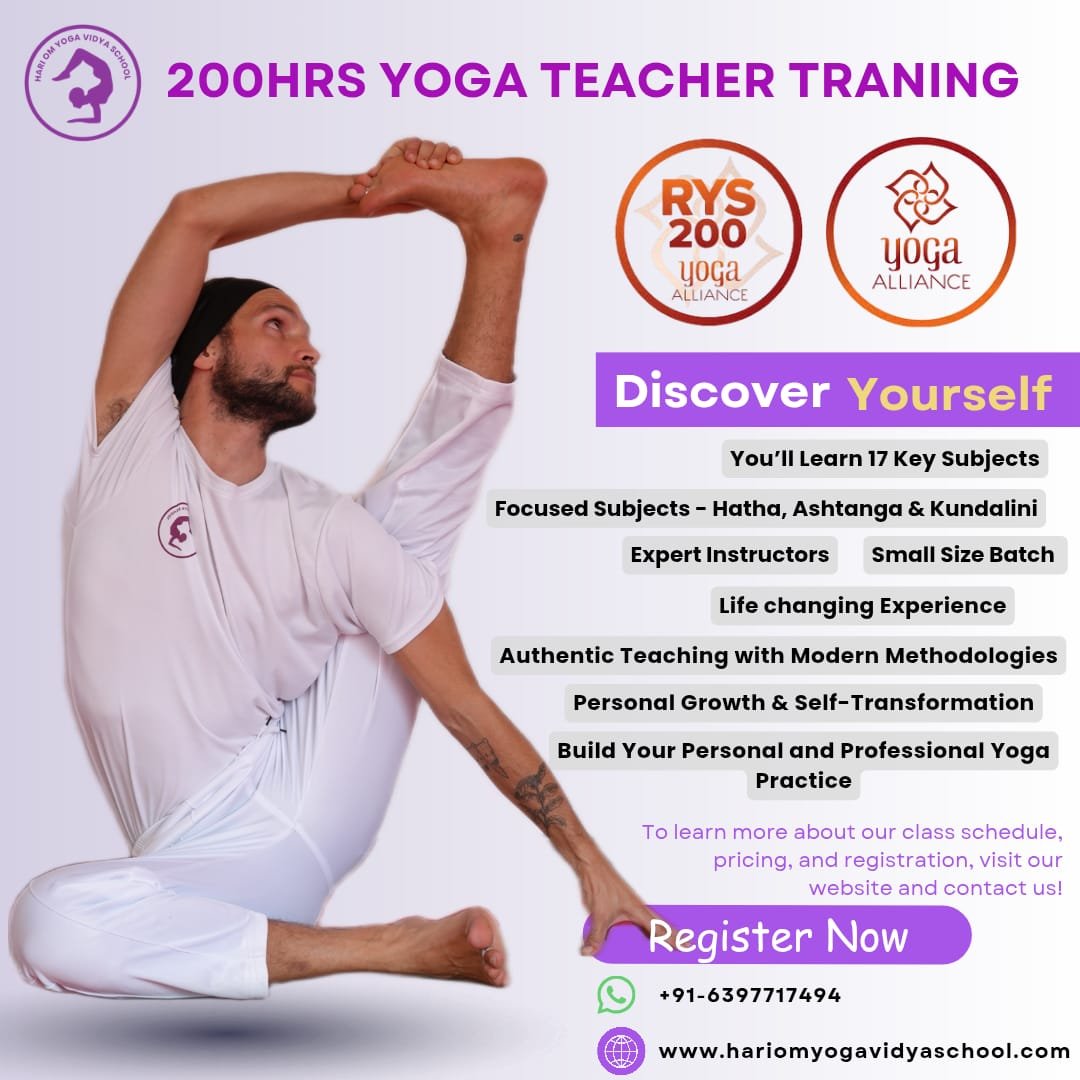Tiryak Kati Chakrasana – Swaying Waist Rotating Pose
Tiryaka Kati Chakrasana, also known as the Swaying Waist Rotation position, improves the hips, shoulders, and back muscles while also reducing belly fat. Tiryaka means oblique in Sanskrit, Kati indicates waist, and Chakra means wheel. As the body sways from side to side at the final posture, it may be loosely translated as swaying waist rotation pose.
Read More: Why Is Kundalini Yoga Dangerous? The Truth About Its Risks and Rewards
How to do Tiryaka Kati Chakrasana (Swaying Waist Rotation Pose)
- Stand in Tadasana position.
- Spread out the legs about 1 to 2 feet wide apart.
- Bring the two palms together and interlock the fingers. Slowly raise the hands over the head. Interlocked the fingers and stretch the hands upwards above the head.
- Now, exhale and bend forward along the hips. Bring the upper body parallel with the ground or perpendicular to your legs.
- Further exhale and twist the body to the right. Lift your head up slightly and look up. Hold this position for few seconds according to your capacity.
- Inhale and bring back your body to the center.
- Again exhale and twist the body to the left. Hold it for few seconds, according to your capacity.
- This is one round of Tiryaka Kati Chakrasana.
- Continue doing as many rounds as per your need and convenience.
- To release the pose, raise your body up, unlock your fingers and bring the feet together to normal standing Tadasana position.
Benefits Of Tiryaka Kati Chakrasana
- Tiryaka Kati Chakrasana is good for the hips.
- It reduces fat around the waist and hips.
- This makes the muscles around the ribs flexible.
- Tiryak Kati Chakrasana improves the sense of balance.
- Tiryaka Kati Chakrasana develops the muscles in the arms, shoulders, and back.
- It gives a good stretch to the back and spine.
- Tiryak Kati Chakrasana relieves pain from upper and lower back.
Read More: Everything You Need to Know About Kundalini Yoga Teacher Training
Contraindications of Tiryak Kati Chakrasana
- Those who suffer from any injury of the hips, ribs or the shoulders should not do this Asana.
- Those with severe lower back pain should do it under guidance from a qualified Yoga Teacher.
Deepen Your Yoga Practice with Hari Om Yoga Vidya School
Located in the heart of Rishikesh, Hari Om Yoga Vidya School is a place where ancient yogic wisdom meets modern teaching techniques. As a top yoga school in Rishikesh, we are committed to providing authentic, immersive yoga education in a peaceful, spiritual setting. Recognized as one of the best yoga schools in Rishikesh, we offer structured training programs designed to help you evolve in your practice, whether you are a beginner or an experienced yogi.
If you’re searching for a yoga school in Rishikesh that focuses on holistic learning, experienced teachers, and a supportive community, look no further!
Explore Our Yoga Teacher Training & Retreats
At Hari Om Yoga Vidya School, we offer a range of courses tailored for different levels of practitioners:
✅ 100-Hour Yoga Teacher Training in Rishikesh – A foundational course for those looking to begin their yoga journey.
✅ 200-Hour Yoga Teacher Training in Rishikesh – An internationally recognized certification for aspiring yoga teachers.
✅ 300-Hour Yoga Teacher Training in Rishikesh – Advanced training to deepen your practice and refine your teaching skills.
✅ 7-Day Yoga Retreat in Rishikesh – A rejuvenating escape into yoga, meditation, and self-discovery.
✅ 10-Day Yoga Retreats in Rishikesh – A transformative experience that blends yoga, relaxation, and Himalayan serenity.
Join us for a life-changing experience and become part of our global yoga family! 🌿✨





